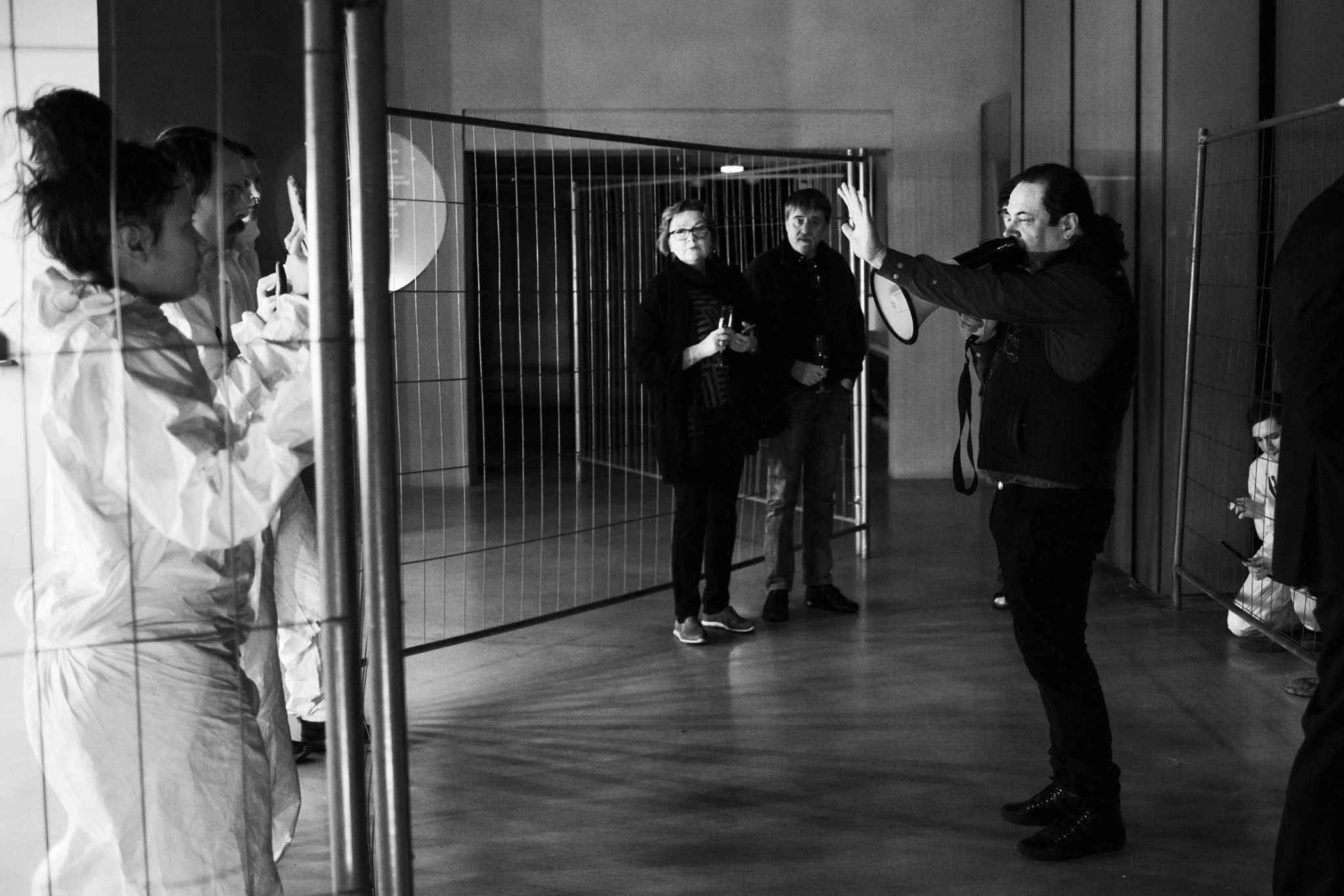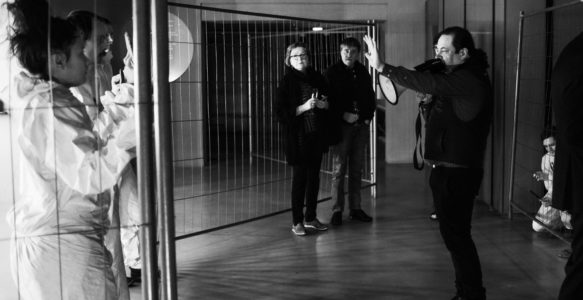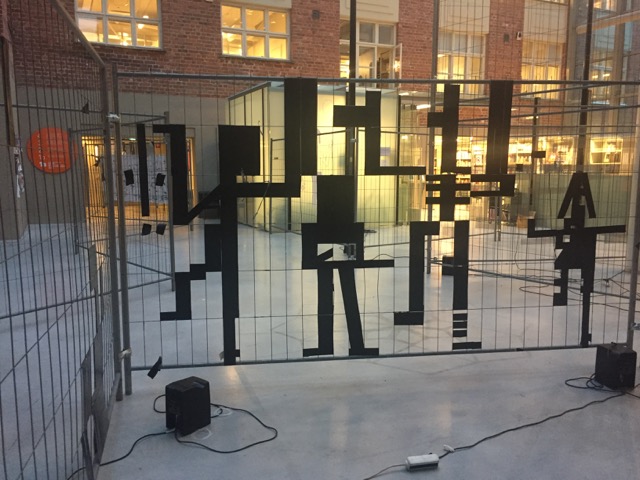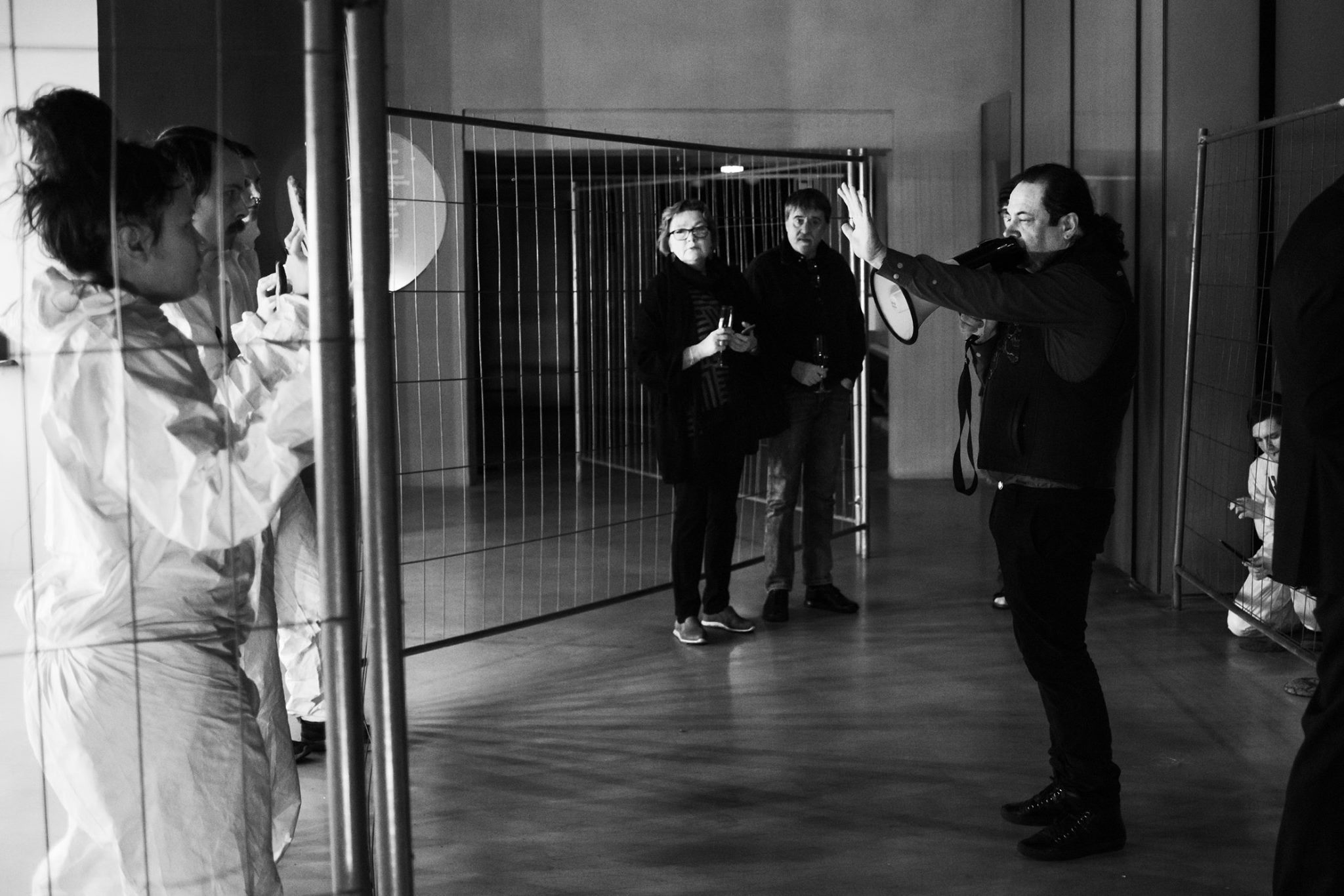Rusk Risk Situation #1
Guillermo Galindo/ Albert Braun
Performed by students of the Yrkeshögskolan NOVIA / University of Applied Sciences and Arts in Jakobstad Finland on November 2017.
Risk Situation #1 was an immersive performance/ installation where, both, the audience (public) and the performers (students of the Yrkeshögskolan NOVIA / University ) enacted as both, witnesses and active participants embodying injustice, unfair detention and bias against minorities and political dissidents in border crossings.
During the ten days of the workshop, composer/performer Guillermo Galindo and artist Albert Braun engaged in a close collaboration where Braun carefully designed the in situ” performance gated space.
During preparation time, composer Guillermo Galindo and the students explored the situations and conditions of detention where students carefully identified and classified possibilities of expression and diverse qualities of sound within a pre-constructed the gated prison maze.
Dressed in jump suits, the performers created complex combination of soundscapes thus activating the multiplicity of sounds on the gates and utilizing personal objects commonly found in detention centers such as passports and hard slices of stale bread.
Repetitive gestures were specifically designed to depict specific sonic environments. A detailed research on the origins and purpose of African American “work songs” and world music intended to attenuate the burden and distress of forced labor were also used as inspiration for the piece.
Rusk Risk Situation #1 was designed as a process/music/performance workshop to both, familiarize the student participants/performers with the use of noise as a means of expression, integrate musical gestures and instrumental ensemble techniques and approach strategies such as body gestures, movement, ambient light and specialization commonly used in site specific performances. Rusk Risk Situation #1 was an immersive and visceral experience where everybody became a witness and a participant. In this case, the goal was to resonate with the experience of victims of injustice and discrimination that are, often imprisoned, isolated and unfairly detained and isolated in border crossings, airports and detention centers all over the world for their political views, having the wrong nationality, religion, race or gender identity or just for carrying a passport of an undesired nation.
Design
The architectural three dimensional design by artist Albert Braun consisted in a large 50-100 square meter area bordered with modular metal gates about a meter and a half tall and 2-3 meters long strategically illuminated with neon lights. Contact microphones and sound producing were installed into the surfaces and metal fences. The environment, suggested one of those, all too familiar, sordid confinement metal gated capacities located at international airports, prison hallways, detention centers and border crossings around the world.
During the performance, the audience stayed virtually “locked in” with the performers in a place that evoked the experiences of victims unjustly detained and isolated.

• Four different sound zones within the fenced area were assigned according to their sound qualities.
Process and Performance
Using a carefully choreographed body language and repetitive gestures, the students were trained to communicate specific states of human condition.
The sound producing surfaces were activated with different materials ranging from nails covered with leather, wood sticks, fishing line, duct tape, passports, stale bread and other symbolic materials.
The participants were instructed to experiment with different quality of sounds in order to find the correct tone balance and sonic expressions to further elaborate a complex palette of sound that was carefully implemented during the performance.
The performers, dressed in jumpsuits were organized into 3 different groups each movable within the four designated sonic locations.
Barking instructions through a megaphone, Galindo displaced each group from one location to another as the piece was composed, orchestrated and spacialized, and tuned “to ear” in real time .The performance of Rusk Risk Situation #1 resulted in an environment of sustained physical movement and became a visceral performative experience where the performers and the audience experienced being both, the victims and the victimizers.



